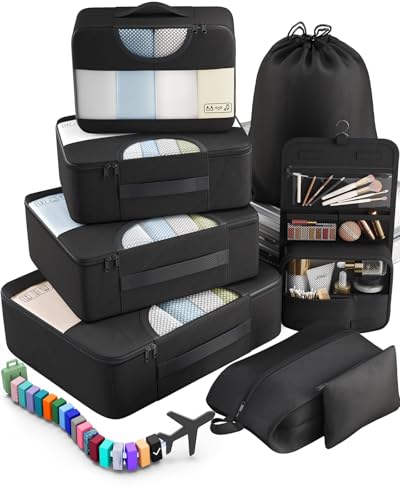In Lesotho, they use Type M power plugs and outlets. The voltage is 220V, and the frequency is 50Hz.
So, you’ll need a travel adapter in Lesotho. Their plugs and outlets are different from the Type A and B ones we use back in the States.
Quick Overview of the Plugs in Lesotho:
- Plug type in Lesotho: M
- Standard voltage: 220V
- Frequency: 50Hz
- Need a travel adapter? Yes, you do need a travel adapter
- Need a voltage converter? Don’t assume — check the power specs
- Recommended plug adapter: Vintar Universal Travel Adapter Kit
We’ve verified this information using official data from local power authorities, global IEC standards, and real-world experiences shared by travelers.
The Only Travel Adapter You’ll Need in Lesotho
Not all travel adapters work everywhere. We don’t sell them, but we’ve spent hours comparing the best options for Lesotho—factoring in voltage, plug types, and reliability. This one came out on top:
Recommended Travel Plug Adapter
by 1,000+ travelers on Amazon
Already on the road or just arrived and forgot your power adapter? It happens. Luckily, airports and local shops often carry basic ones. Still, packing one ahead of time saves you the hassle and guarantees you’ve got one that works for your needs.
People visiting Lesotho often also explore Eswatini, South Africa, and Botswana. Check plug compatibility before your trip.
Power Outlets in Lesotho
In Lesotho, they use Type M power plugs and outlets.
Type M

Type M outlets have three large round prongs like Type D but spaced farther apart, designed for high-power appliances, and only accept Type M plugs—Type C may fit, but it’s unsafe and not recommended.
Do You Need a Voltage Converter?
Before plugging in your electronics in Lesotho, check the voltage. It’s different from the 120V used in the U.S., so you’ll likely need a converter.
Before traveling, always double-check the input voltage label on your device. If it states “100-240V, 50/60 Hz”, your device is designed to handle different power systems and won’t need a converter. This includes most phones, tablets, laptops, cameras, and rechargeable personal care items.

Which Travel Devices May Need a Converter?
Need a reliable voltage converter? These are the top picks according to real reviews — check them out.
| Device | Need Converter? | Notes |
|---|---|---|
| Phone | ❌ No (usually) | Most modern phone chargers are dual voltage (100–240V) |
| Laptop | ❌ No (usually) | Check the power brick label for 100–240V |
| Hairdryer | ✅ Yes (often) | High wattage; many models are not dual voltage |
| Electric toothbrush | ⚠️ Check voltage | Some models are 110V only |
| Camera / DSLR | ❌ No (usually) | Most chargers are dual voltage |
| Power bank | ❌ No | Charges via USB, adapter is enough |
| Electric shaver / trimmer | ⚠️ Check voltage | Older or cheaper models may not support 230V |
| Tablet / iPad | ❌ No | All models are dual voltage |
| Portable fan | ✅ Yes (sometimes) | Many models are not compatible with 230V |
| Game console | ⚠️ Check voltage | Newer consoles like PS5 and Xbox are often dual voltage — check to be sure |
| Bluetooth speaker | ❌ No (usually) | Charges via USB |
| E-reader (Kindle, etc.) | ❌ No | USB charging only, no converter needed |
Top Travel Essentials to Pack
From power banks to packing cubes, a few small add-ons can take the hassle out of travel. Here are some favorites.
Digital Luggage Scale
Packing Cubes
Power Bank
More About Lesotho
Lesotho is a mountain kingdom entirely surrounded by South Africa, home to about 2.3 million people. Tourism has been growing steadily—arrivals passed 1.1 million in 2019—and while its economy is modest, travel and culture play an increasing role. The terrain is dramatic: jagged peaks, pony paths, and highland meadows that feel unlike anywhere else in Southern Africa. Outdoor pursuits like hiking, skiing at Afriski Resort, and pony-trekking are top draws for adventure travelers.
Local cultural events such as the Umhlanga Reed Dance and traditional blanket festivals offer vibrant windows into Basotho heritage. Tourism revenue supports thousands of jobs, and shopping or dining often feeds directly into community incomes through craft markets or family-run lodges. Visitors stay for around six nights on average—long enough to hike, visit villages, and absorb the traditions of mountain life. Even though most visitors come from neighboring South Africa, Lesotho’s culture and elevation give it a unique identity.
For American travelers, Lesotho offers fresh-altitude adventure in easy dimensions. Driving up from South Africa is direct, flights land at small regional airports, and English is spoken in tourism-focused areas. Travel feels more community-based than commercial, and accommodation often reflects local hospitality. Whether you’re hiking a scenic ridge, landing atop a pony trail, or watching Basotho dancers in traditional gear—Lesotho delivers scenery, story, and authenticity at human scale.
Top places to visit in Lesotho: Maseru.




